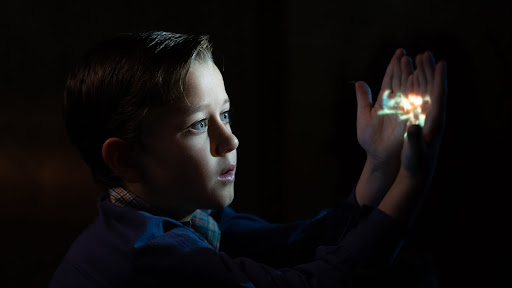
After over 50 years of filmmaking, legendary director Steven Speilberg presents his most personal story yet.
Steven Speilberg’s latest crowd-pleasing delight opens with young Sammy Fablemen (a stand-in for Speilberg himself) attending his first movie. The small boy expresses concern to his mother and father, who reassure him the picture is safe. Little Sammy watches Cecil B. Demil’s circus film, “The Greatest Show on Earth,” with open-eyed wonder, in awe of the picture unfolding in front of him. His delight is only disrupted by a particularly frightening sequence involving a brutal train crash. The scene disturbs Sammy so deeply that in order to understand it he recreates it with a model train, filming on his father’s 8mm camera.
Here, we enter “The Fablemans,” an entrancing portrait of Speilberg’s own family. Sammy’s mother, played by Michelle Williams in an Oscar-deserving performance, is a musician who supports her son’s dreams of storytelling. The father, played by Paul Dano in a refreshingly nuanced performance, is a brilliant engineer who works with his best friend (Seth Rogen) to make computers. Sammy has three sisters whom he soon pulls into his dream, creating 8mm shorts with whatever budget he can assemble. Through family deaths, marital issues and antisemitic bullying, we follow the Fablemans, with a specific focus on Sammy’s dream of movie-making.
There’s a stunning intimacy to the film as Speilberg’s go-to cinematographer Janusz Kaminski balances the delicate intricacy of family life with Spielberg’s standard grandiosity. At times, it is as if the viewer is peering into the Fableman home through a keyhole, watching notable moments of the family’s life take place. This is delivered with an unflinching focus on the struggle and contempt that Sammy faced throughout his childhood.
Despite a nature less imposing than Speilberg’s pictures like “Jurassic Park” and “Indiana Jones,” there are similarities in the purity and empathy dispersed throughout his blockbusters. There is a beat where Sammy transitions from child to teenager, which harkens back to River Phoenix’s transition to Harrison Ford in “Indiana Jones and the Last Crusade.” Speilberg’s skill has clearly not deteriorated with time — he only needs material to be passionate about.

At his best, Speilberg is a filmmaker in complete control of his audience. When he wants us to cry, we cry; when he wants us to smile, we smile. Call it genius or manipulation, but I suspect anyone with interest in creativity will allow the sweeping musical nature of “The Fablemans” to wash over them. If you love art, you will like it, but if you have ever crafted art (specifically film) Speilberg’s picture will tap into something deeply personal.
There is a scene in which Sammy and a group of friends watch John Ford’s classic western, “The Man Who Shot Liberty Valance.” From watching “The Fablemans,” Speilberg’s dedication to Ford is more than clear — it’s a dominating layer of admiration. When the film derails and expands the reality of Speilberg’s upbringing, I am reminded of a quote from Liberty Valance: “When the legend becomes fact, print the legend.” Is there anything more cinematic?



